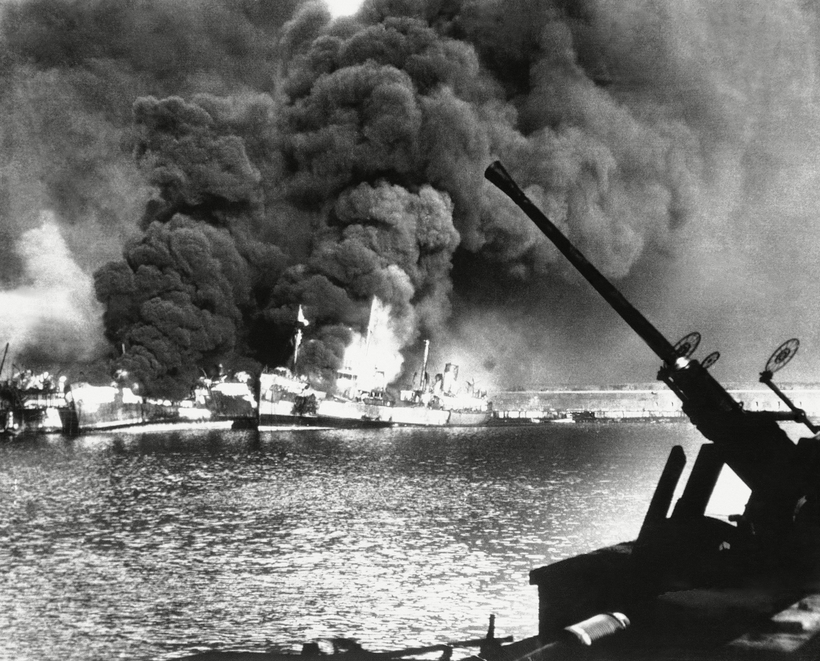Few writers are better at finding new paths through the well-worn territory of World War II than historian Jennet Conant. Her previous five books on the subject have won awards and critical acclaim because she seeks out and follows compelling personal narratives—the makers, founders, funders, and technicians that build and steer wartime machinations.
She has profiled Alfred Lee Loomis, the Wall Street tycoon who funded the development of radar-detection systems used to defeat German air and naval forces (Tuxedo Park). She has described J. Robert Oppenheimer through the eyes of the scientists he recruited and led into the desert in the name of the Manhattan Project (109 East Palace). She has flipped the script on household names, first by detailing Roald Dahl’s life as a charismatic British spy charged with schmoozing his way into the secret lives of Washington’s political elite, then through Julia Child’s years as a citizen spy, hapless ingénue, and forsaken friend (The Irregulars and A Covert Affair). She’s even climbed up into her own family tree to confront the complicated legacy of her grandfather James B. Conant, chemist, president of Harvard University, adviser to F.D.R., and architect of the atomic bomb (Man of the Hour).
In her newest book, The Great Secret, Conant chronicles the German attack on Bari and its repercussions, from the dark, oily depths of Bari harbor to the gleaming, sterile laboratories of the Sloan Kettering Institute.
Behind Bari
On the evening of December 2, 1943, the German Luftwaffe bombed Bari harbor, a crowded port on the east coast of Italy, sinking 17 Allied ships and killing at least a thousand military personnel and hundreds of civilians. Survivors who had leaped into the harbor to escape the flames and devastation were pulled, dehydrated and hypothermic, from the contaminated water.
What (almost) no one knew at the time was that one of the ships destroyed in the raid, the U.S. Liberty John Harvey, was packed with 2,000 mustard-gas bombs (a misnomer, as it’s not actually a gas but liquid sulfur mustard); when the bombs were destroyed in the raid, all that sulfur mustard was released into the harbor. Mustard alone would have quickly hydrolyzed and dissipated in the water, but when combined with oil floating on the surface of the harbor, it became a potent, long-acting solution that caused the survivors to suffer a variety of painful post-traumatic symptoms.
Survivors quickly began showing evidence of toxic exposure, including “burns, blisters, dermatitis, breathing difficulties, blurred vision, vomiting, and acute pain due to elephantiasis of the genitals”—symptoms no one in Bari could explain.
From the dark, oily depths of Bari harbor to the gleaming, sterile laboratories of the Sloan Kettering Institute.
Enter Lieutenant Colonel Stewart Francis Alexander, a physician flown in to assess and investigate the cause of survivors’ symptoms. From the moment he entered the hospital, Alexander knew mustard gas had to be involved, as a telltale garlicky smell hovered over the city. He postulated, “The individuals, to all intents and purposes, were dipped in a solution of mustard-in-oil, and then wrapped in blankets, given warm tea, and allowed a prolonged period for absorption.”

Alexander related these findings to his superiors, but everyone, all the way up to Dwight D. Eisenhower and Winston Churchill, strenuously denied the possibility of sulfur-mustard exposure.
Amid the obfuscation, suffering, and devastation, Alexander was confident in his diagnosis and discovered a silver lining that would have consequences far beyond World War II and his patients in Bari. He noted that some survivors’ white-blood-cell counts fell precipitously a few days after exposure to the as-yet-unnamed toxic agent, a reaction he’d seen before in experiments on rabbits in the laboratory. To Alexander’s consternation, those experiments had been cut short, deemed “not beneficial” to the war effort, but Alexander knew there was great potential for the use of mustard and other chemical weapons in the treatment of white-blood-cell cancers.
Cancers such as lymphoma and leukemia are often characterized by rampant, unfettered proliferation of white blood cells, and Alexander sensed that the otherwise toxic class of chemical blister agents that include sulfur mustard might prove to be a promising course of treatment for these diseases. Previous research may have stalled out due to the war effort, but, as Conant writes, “cruel fortune had handed [Alexander] a morgue full of case studies.”
The attack on Bari and Alexander’s dogged pursuit of the truth led to breakthroughs in cancer treatment, convoluted political and scientific intrigue, and continuing questions of medical ethics for physicians who seek to translate science from bench to bedside. Conant delights in the devilish details, the hidden, overlooked, and deeply personal stories that constitute our collective historical record. In her deft and experienced hands, readers will discover great delight as well.
Jessica Lahey is the author of The Gift of Failure and the upcoming The Addiction Inoculation


